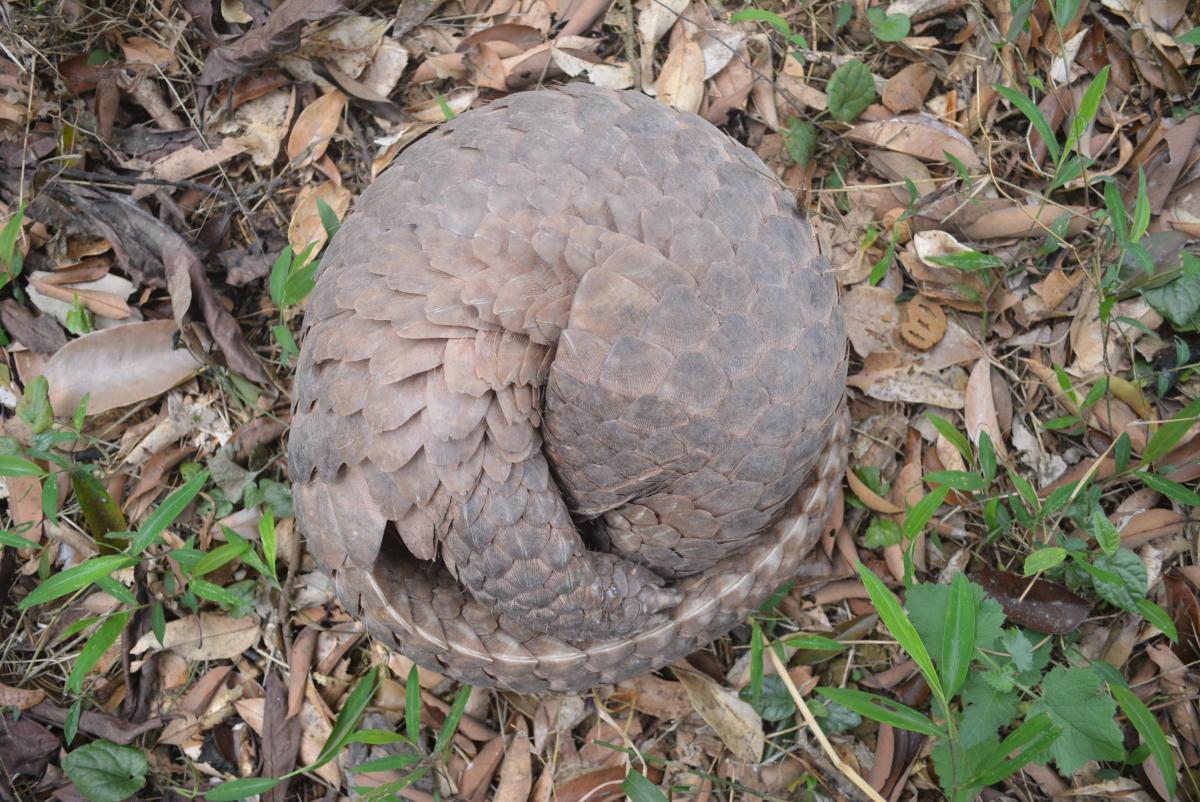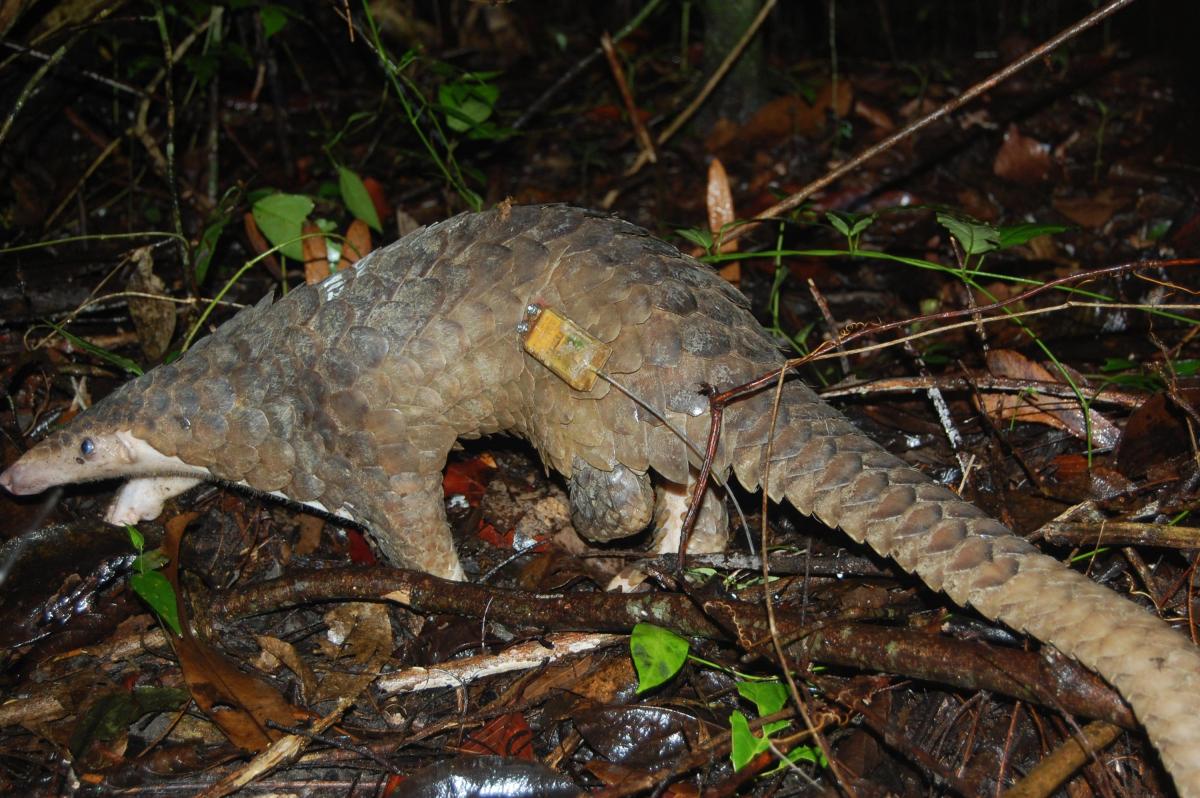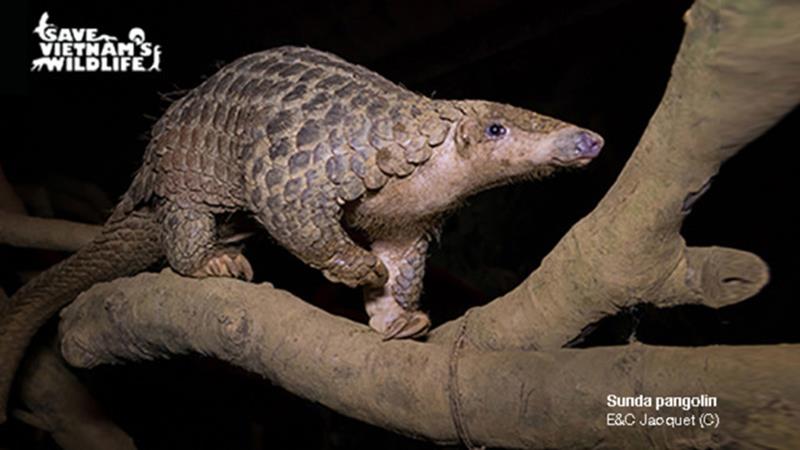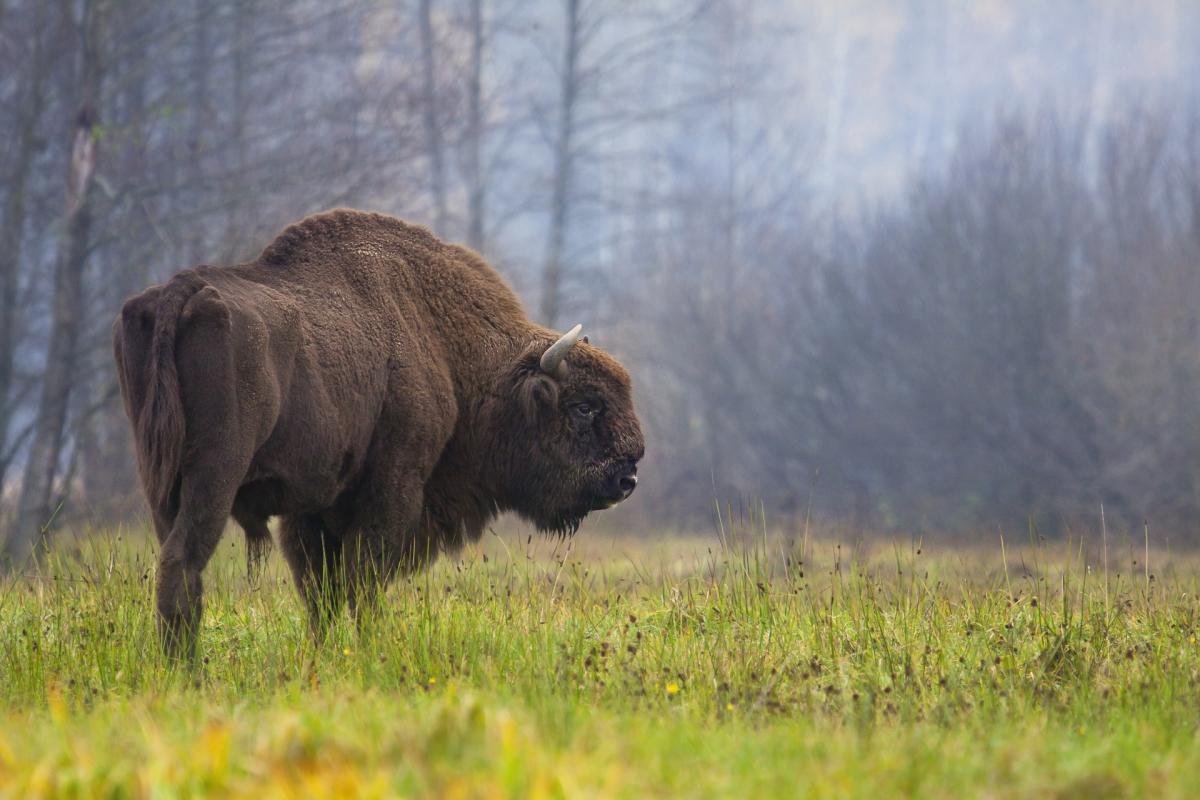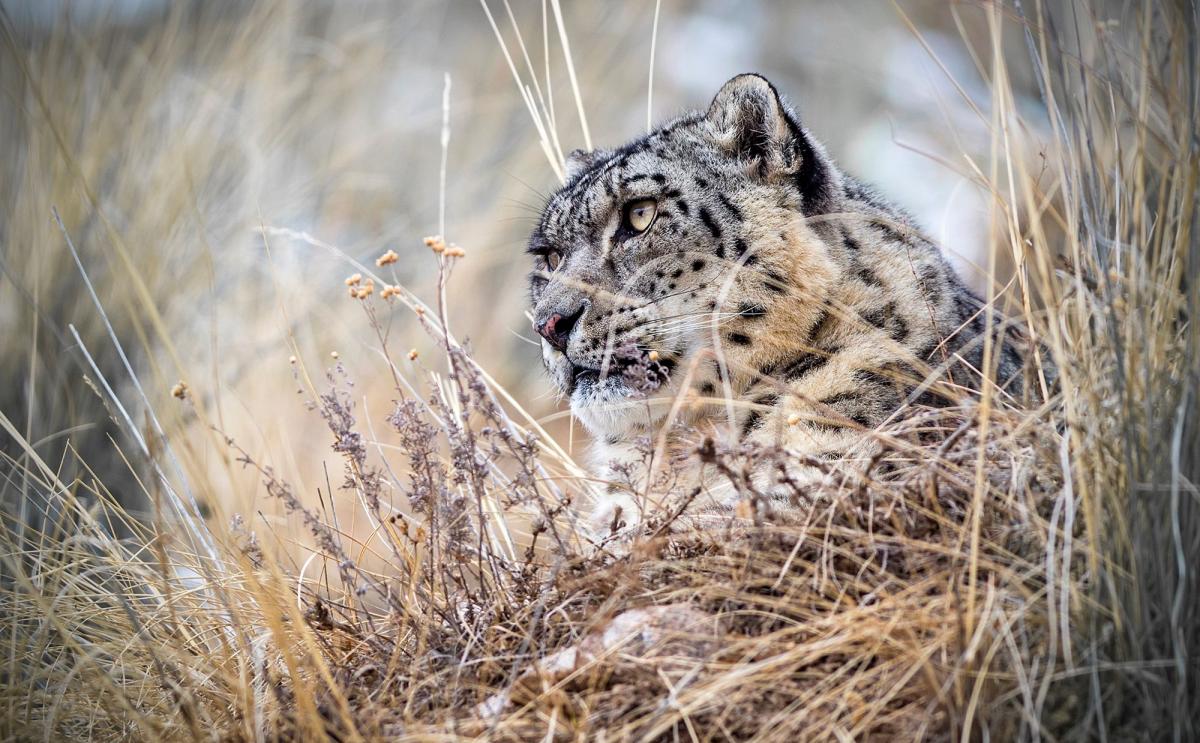Scaling Up Pangolin Conservation Like Never Before
In celebration of World Pangolin Day, Dan Challender, IUCN Programme Officer for Sustainable Use and Trade of Wildlife and Chair of the IUCN Species Survival Commission Pangolin Specialist Group discusses pangolin conservation and the achievements in conservation of this species over the past year.
Saturday 17th February 2018 is World Pangolin Day and the 6th birthday of the IUCN SSC Pangolin Specialist Group, also known as the Pangolin SG. World Pangolin Day provides a perfect opportunity to celebrate pangolins for the fascinating and intriguing creatures that they are, and to reflect on some of our key accomplishments these past six years.
Let us first celebrate pangolins! I became captivated by pangolins because they are the most unique and enchanting animals I could ever wish to see. Not only do they look prehistoric and like they belong in the Jurassic period (they have been likened to dinosaurs!) but the global conservation community knows very little about them and many mysteries about pangolins remain. For instance, we are still learning how long they live in the wild, and we’ve only just discovered through recent research in the Central African Republic that the black-bellied pangolin (Phataginus tetradactyla), thought to be fully nocturnal, is actually active diurnally (in the daytime). With so much still to learn about the animals, they epitomise the wonder of the natural world, and pangolin researchers today are entitled to feel like Darwin or Wallace as they seek to reveal so much about them that remains unknown.
Such knowledge is essential to informing conservation actions for pangolins – and they really need it! Based on best available knowledge, all pangolins are considered threatened with extinction on The IUCN Red List of Threatened SpeciesTM, where they are categorised as Critically Endangered, Endangered or Vulnerable. Their imperilled status is due to overexploitation from both poaching for consumption of the animals and their body parts (e.g., scales) locally and from trafficking of pangolins and their scales internationally, mainly to satisfy the unyielding demand of China and Vietnam’s luxury meat and traditional medicine markets. There pangolin meat is eaten as a luxury dish in high end urban restaurants and scales are used to treat a range of ailments from psoriasis to cancer. While pangolin trafficking has historically been confined to Asia, the most worrying trend in the last decade has been the emergence of intercontinental trafficking in African pangolin scales to Asia, which now takes place at a huge volume, to the tune of tens of tonnes (translating to tens of thousands of pangolins) per year, and now affects all eight pangolin species.
But there is cause for hope. There is an ever-strengthening conservation response to the trafficking crisis and the Pangolin SG has made important progress in our first six years. We now have over 100 members from 35 countries, and as the profile of pangolins grows we are responding to increasing interest from civil society, governments and NGOs. We have taken the best available knowledge and applied it to assessing the conservation status and extinction risk for pangolins on The IUCN Red List of Threatened SpeciesTM. Numerous large field conservation projects have launched which focus on pangolins, including Fondation Segré Pangolin Conservation Initiative I and II, among others. In 2013 the Pangolin SG gathered experts from across the globe to develop the first ever global conservation action plan for pangolins to guide conservation investment, ‘Scaling Up Pangolin Conservation’, and soon after contributed expertise to the First Pangolin Range States Meeting, co-hosted by the governments of Vietnam and the United States in 2015. Importantly, we continue to provide scientific and technical expertise to the Convention on the International Trade in Endangered Species of Wild Fauna and Flora (CITES). The CITES Parties decided in 2016 with nearly universal agreement at their 17th meeting of the Conference of the Parties (CoP17) to afford pangolins the highest level of international protection by up-listing them to Appendix I of the Convention. This means that international trade in pangolins for primarily commercial purposes is now prohibited and the Pangolin SG is developing tools to help support its implementation.
In the coming years our important work will continue. We are once again assessing the status of the eight pangolin species for the The IUCN Red List of Threatened SpeciesTM, and will continue to do so periodically in order to make sure the best and most current information possible is available to governments and stakeholders. As the profile of pangolins has grown dramatically in recent years and with it an increase in support for pangolin conservation, the need for detailed regional and national conservation strategies is paramount. Following IUCN’s best practice guidance on species conservation planning, the Pangolin SG will continue our work with partners to develop conservation strategies for the eight pangolin species and help ensure they are implemented. We met with experts and range state government representatives in 2017 to develop a regional strategy for the Sunda pangolin, and are supporting the development of national strategies for pangolins in Taiwan, Singapore and the Philippines, and that’s just the beginning.
You can be a part of our work to celebrate and conserve pangolins on World Pangolin Day and every day. Whether you are lucky enough to see a pangolin anytime soon, or are celebrating the species by building a snow pangolin, playing pangolin party games or having a bake sale to raise conservation funds, take time to celebrate these fascinating animals with us, and be sure to join us on social media (@PangolinSG) throughout the year.
Dan Challender, Chair of the IUCN SSC Pangolin Specialist Group
